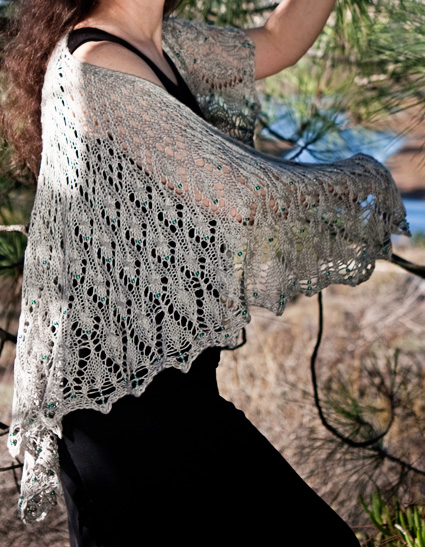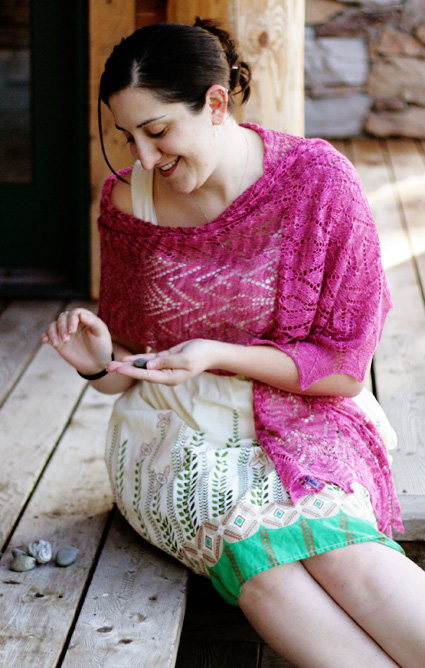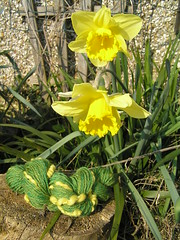My friend Jo met these girls recently while on holiday, and spent a happy half an hour picking up.... yes, sir, yes, sir, two bags full.

It amounts to about 300g which is plenty to make Jo a pair of socks, even after selecting out the coarser, hairier, shorter or really dirty stuff (the latter I think I saw somewhere euphamistically called the 'skirt').

Some of it (in my now lanolin-soft hand) really is absolutely beautiful. I don't know the breed, one of the usual crosses, I guess, but the best stuff has a nice long staple, good crimp and is quite fine.
With the dirtiest stuff picked out, the Power Scour doesn't have too much work to do, but I like spinning it nice and clean and grease-free, so it'll be a thorough wash and then a day or two to dry. I'm going to dye it after carding it, but before spinning it.

 I mentioned that the dye had pooled a bit in my cling-film packets and so the wool was quite dark in places and quite light in places. More of a contrast than I'd expected. I'm not sure that I want a self-striping effect this time. A friend suggested putting it through the drum carder once more, and this is the much happier result.
I mentioned that the dye had pooled a bit in my cling-film packets and so the wool was quite dark in places and quite light in places. More of a contrast than I'd expected. I'm not sure that I want a self-striping effect this time. A friend suggested putting it through the drum carder once more, and this is the much happier result. Finally it's time to start spinning it. I'm using short-draw for a nice tight strong worsted type yarn. I'm trying to work quite fine because the socks are made on small needles (2.25mm)
Finally it's time to start spinning it. I'm using short-draw for a nice tight strong worsted type yarn. I'm trying to work quite fine because the socks are made on small needles (2.25mm)


























